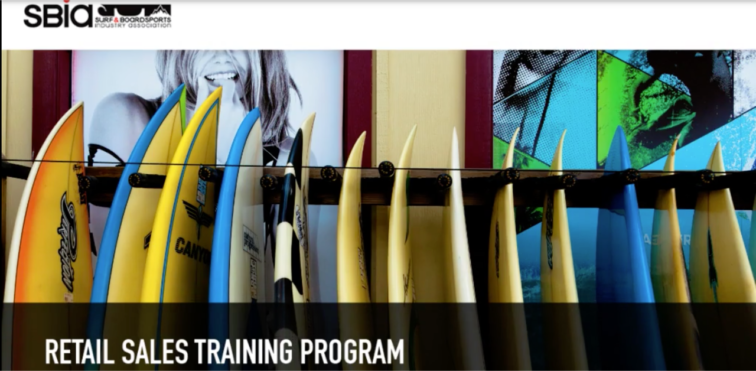Original Article from the ARA Retail Institute
Good customer service is essential in the retail industry, and with the summer months only around the corner it’s always good to have a refresh and educate your staff as to what good customer service should look like.
There are a few simple steps that can help staff members nail customer service. The ARA Retail Institute identify 5 “Ps” can define good customer service:
-Promptness
Promises for delivery of products must be on time. People do not like to wait. Within the first 30 seconds in a store or business, an employee should greet customers and begin to meet their needs.
-Politeness
Politeness is almost a lost art. Saying “Hello,””Good afternoon”, and “Thank you”, is part of good customer service. Rushing up and trying to make a sale before saying hello or acknowledging your customer is not good customer service.
-Professionalism
All customers should be treated with professionalism. When a customer makes a request, pointing to the area of the store is not good customer service. Simple gestures like offering to take them to the item brings return business.
-Performance
All services should be performed with skill and accuracy. Folding garments, assembling a surfboard, re-merching your sunglass cabinet, should all be performed like it was a very important task, and done with care and skill.
-Personalisation
Using the customer’s name is very effective in producing loyalty. People go to a store and pay a generous price in part because of the good customer service. There are many reasons a customer will return to a store, but the most important is the customer service they receive whilst there. People will pay more for an item if the customer service standards are high and they feel like they have been treated well.
Following on the 5 P’s there are simple steps that staff can follow that will build customer rapport and help in creating an outstanding in-store experience.
Building Relationships with Customers
When a customer enters your store they want to deal with a sales assistant with whom they feel some kind of bond. Even when that connection is fleeting, customers prefer ‘feel good moments’ to those that leave them feeling dissatisfied or uncomfortable. The more quickly and thoroughly you can establish a relationship with your customer the better your results will be and you will create a memorable experience for them.
Your Customer’s underlying needs
There are some underlying needs that apply to most of our customers, most of the time. Being aware of and understanding these needs allows you to apply them at the right times, adding to your ability to create successful relationships with your customers.
Consistency
Consistency builds trust in our lives. It allows us to know what to expect and what not to expect. For example, for most of us it is comforting to shop at the same supermarket every week, as we know what is in what aisle. Very rarely will we go to a different shopping centre where we don’t know our way around, and what if it doesn’t have the shops we normally like to browse in?
Consistency is also about how you present yourself. A customer expects the same level of service when they walk into your business, every time they walk in. When it changes, they notice. One of the reasons McDonalds has been so successful is its ability to offer and deliver the same service levels within every business.
Value
Customers are looking for value in their purchases and it is your job to help them perceive this by finding out about their wants and needs, and addressing those and not what you might think is important. Often what customers care the most about is what your product or service can do for them, rather than its technical aspects. This means talking about benefits not features. This links back to the importance of active listening. Listen as customers talk about what is important to them and note the terms they use to describe what they need and want. This helps you to hone in on what is most important to them, select which benefits to mention and then explain them in terms that the customer can readily understand.
Adapting your communication style to your customer
Is your customer informal and relaxed or more formal and serious? Is he fast-paced and on a mission or is he a thinker that needs to make sure his choice is 100% right? There are so many subtleties when it comes to communicating to customers in a way that best connects with them. Effective sales people are more attuned to these subtleties and are equally more flexible or adaptable to change their own style to the style of the customer.
How to adapt
Adapting allows you to be empathic and to “get into the other person’s shoes”. The more you can do this, the more effective your relationships will be.
Before you look at adapting your behaviour, there are three principles to be aware of. These principles will influence the success of your efforts.
- The more you see someone as being like you, the faster you will build trust between you.
- Listening to others builds their trust in you.
- Treating others the way they would like to be treated will improve the communication.
Keeping Customers Informed
As you can see a large and important part of your role is to build relationships with your customer, it would then make sense to make sure that we keep our customers informed with any information they may need about their purchase, or policies and procedures within the store. It is your responsibility to make sure that the customer is comfortable with all the details to make sure that you are creating a memorable experience from the beginning to the end of the interaction.
Below are some examples of when you may need to keep the customer informed:
- Customer Orders
- Lay-by’s
- Refund/Exchange policy
- Care instructions of the product
- In store promotions
- On line promotions
- New products arriving in store
- Warranty Details
- Finance Options
To continue developing your staff’s customer service skills, the SBIA Online Customer Service offers an easily accessible and affordable option that can help develop your staff’s skills leading into the peak season. You can find out more about signing up to the training modules here.









